Soil cultivators are an essential outdoor tool for any gardener, as they help to prepare the soil for planting and maintain the health of your ground. These vital tools are not only used to prepare the soil for planting, but can also remove weeds or other undesirable plants from your plot of land. They come in various shapes and sizes and can be hand-held or even mounted on tractors or other heavy machinery. In this guide, we round up the best soil cultivator tools, from long-handled cultivators to hand tools.
These tools generally have a series of curved or straight tines or blades designed to loosen the soil, break up clumps, and eliminate weeds as it is pulled or pushed over the ground. The cultivators we're featuring are intended for use in small gardens and are hand-held, used by one person.
Best cultivator tools at a glance:
• Best long-handled cultivator with star-shaped blades: Coopers of Stortford Long-Handled Cultivator - View on Coopers of Stortford
• Best premium long-handled cultivator: Draper Heritage 99017 Cultivator - View on Robert Dyas
• Best budget handheld cultivator: Draper 88809 Carbon Steel Heavy-Duty Hand Cultivator - View on Amazon UK
Soil cultivators can be an effective way to prepare the soil for planting, as they help improve the structure and fertility of the ground and make it easier to plant and care for crops so, if you are looking to optimise growth of your outdoor plants, here are some things to consider.
Best long-handled soil cultivator tools
Best long-handled cultivator with star-shaped blades
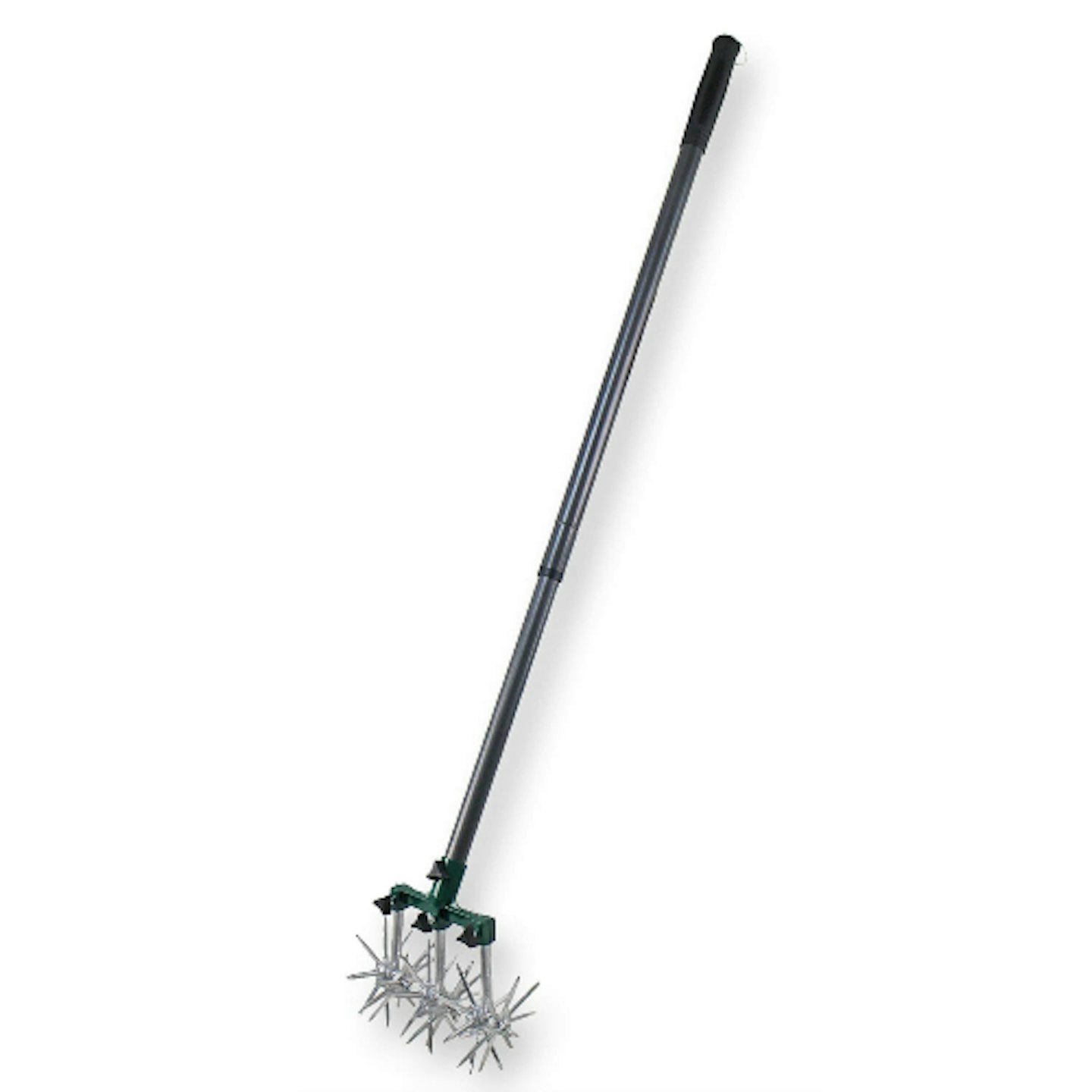 Coopers of Stortford
Coopers of Stortfordwww.coopersofstortford.co.uk
The Coopers of Stortford Long-Handled Cultivator is a versatile and convenient tool that is perfect for any gardener looking to cultivate their soil easily. It features 48 rust-resistant, aluminium, star-shaped blades and robust tines and is comfortable to grip.
The long handle and durable tines make it easy to use and maintain, and it is an excellent choice for those looking for an easy-to-use cultivator. The handle is adjustable and offers a comfort grip design.
Pros
- 48 offset rust-resistant aluminium blades
- Lightweight metal shaft that is adjustable
Cons
- Blades may require more maintenance and upkeep than other cultivators
| Material: | Aluminium star-shaped blades |
| Weight: | N/A |
| Dimensions: | L145 x W20cm |
Best premium long-handled cultivator
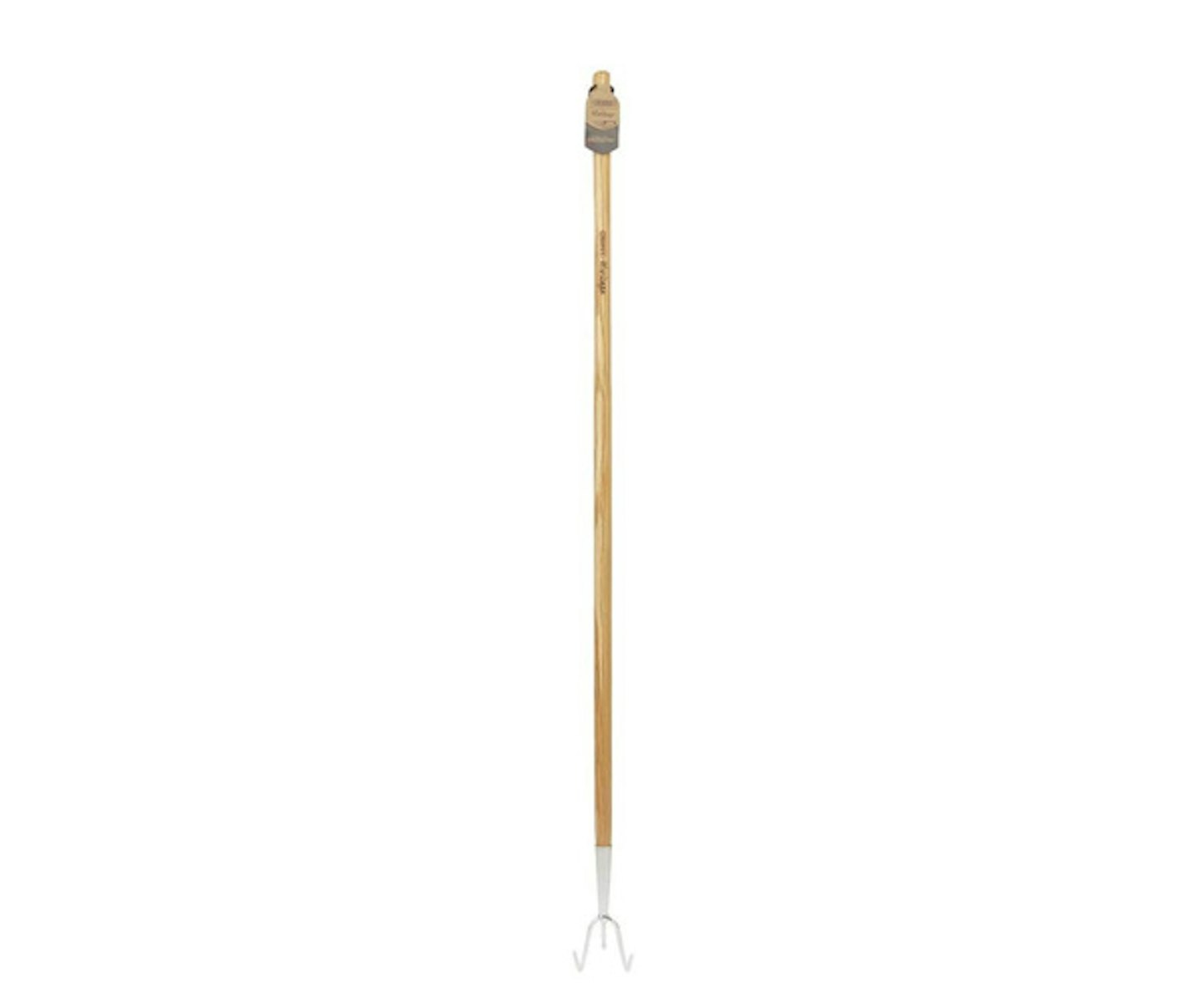 Draper/Robert Dyas
Draper/Robert Dyas www.robertdyas.co.uk
This long-handled cultivator is made from a durable stainless steel material that is resistant to rust and wear and features a sleek design that is easy to use. The cultivator has a set of three sharp and pointed prongs designed to loosen and aerate the soil, making it easier for roots to penetrate.
In addition to its cultivating capabilities, the Draper Heritage 99017 Cultivator can also remove weeds and other unwanted plants from the soil using its sharp and precise prongs.
Pros
- Prongs are made of polished, durable stainless steel
- Timber sourced from sustainable and responsibly managed forests
Cons
- Wooden handle is not adjustable
| Material: | Stainless steel and solid ash handle |
| Weight: | 2000g |
| Dimensions: | 146.5 x 10 x 10.5cm |
Editor's choice
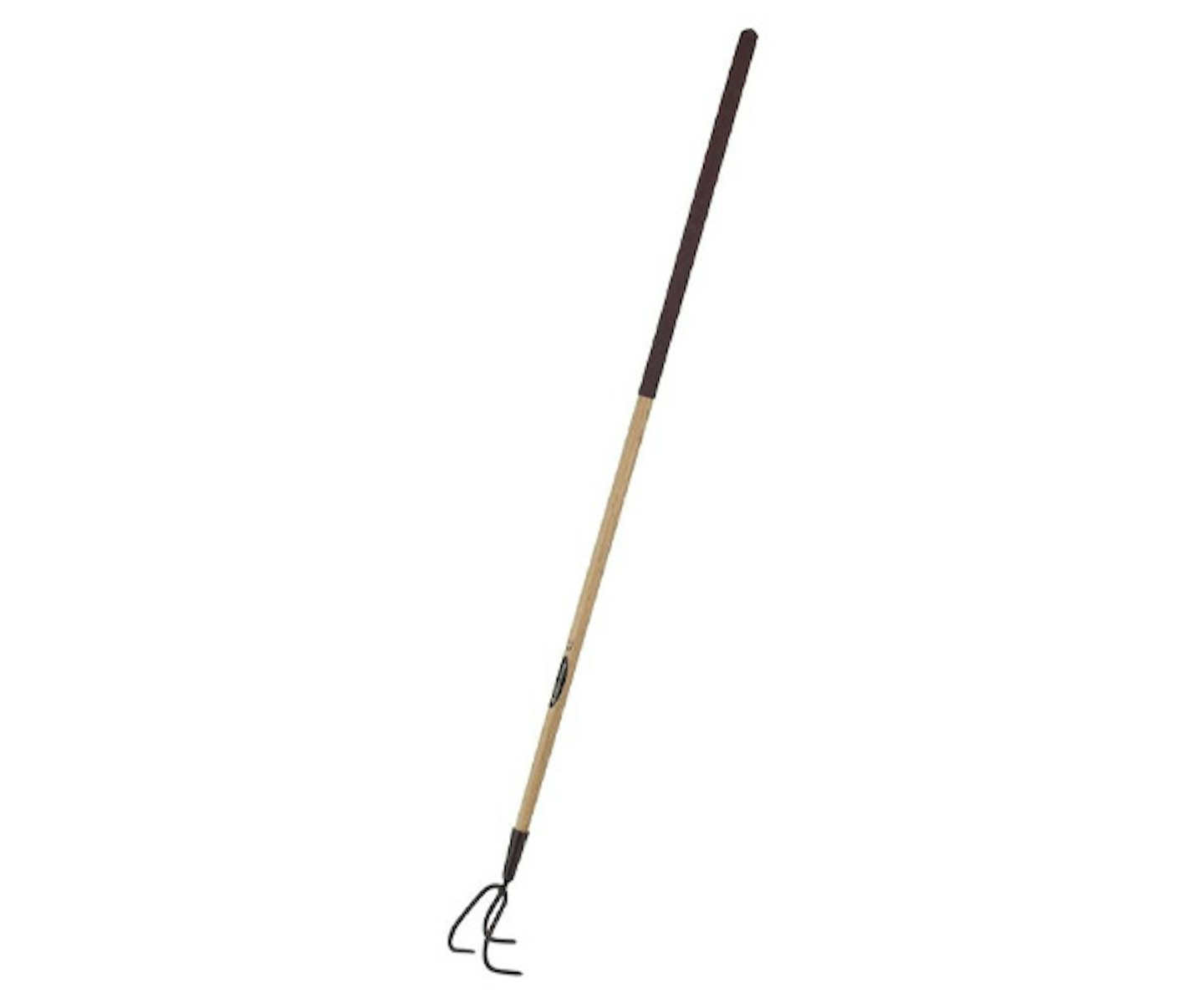 Spear & Jackson/Amazon
Spear & Jackson/AmazonThis award-winning brand has always designed tools you can rely on. From the "Elements" range, this three-prong cultivator is crafted from a combination of a hardened carbon steel head and a weatherproofed ash wood handle for greater durability and longevity.
The shaft is lightweight and easy to use, and the soft-feel handle is comfortable to grip for a day working outside.
Pros
- Weatherproofed handle and epoxy-coated prongs
- Long reach with a length at just over 159cm
Cons
- Might be too long for some people
| Dimensions | 18cm wide, 1.2m long |
| Weight: | 880 grams |
| Material: | Carbon steel head and lacquered ash |
Best long-handled cultivator for length
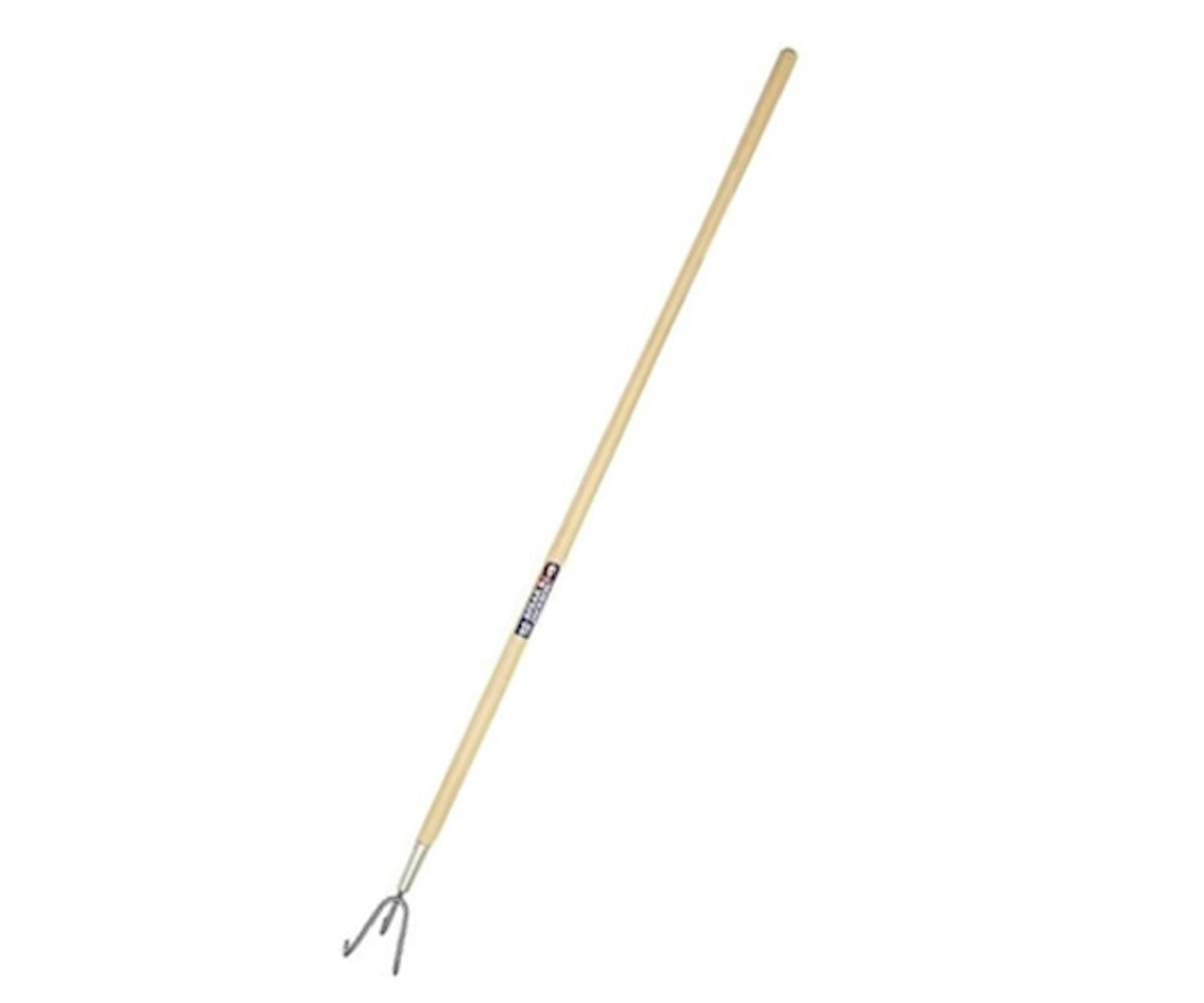 Spear & Jackson
Spear & JacksonAnother excellent tool from Spear & Jackson is this Neverbend cultivator. Hammer-finished and featuring an epoxy-coated head for improved resistance to rust, scratches, humidity, and alkalines in the soil, this tool's prongs are made of the "Neverbend" carbon steel.
This tool features Spear & Jackson's "Supergrip" handles so you can achieve the ideal angle. The double riveted sockets ensure longevity, and the polished stainless steel heads are designed to tackle the most demanding tasks and the tests of time.
Pros
- Heat-treated, hardened, carbon steel head
- Durable, weatherproofed hardwood handle
Cons
- Pronged head is quite narrow
| Dimensions: | 9cm wide, 1.68m long |
| Weight: | 0.97kg |
| Material: | Carbon steel prongs and ash shaft |
Best adaptable soil miller
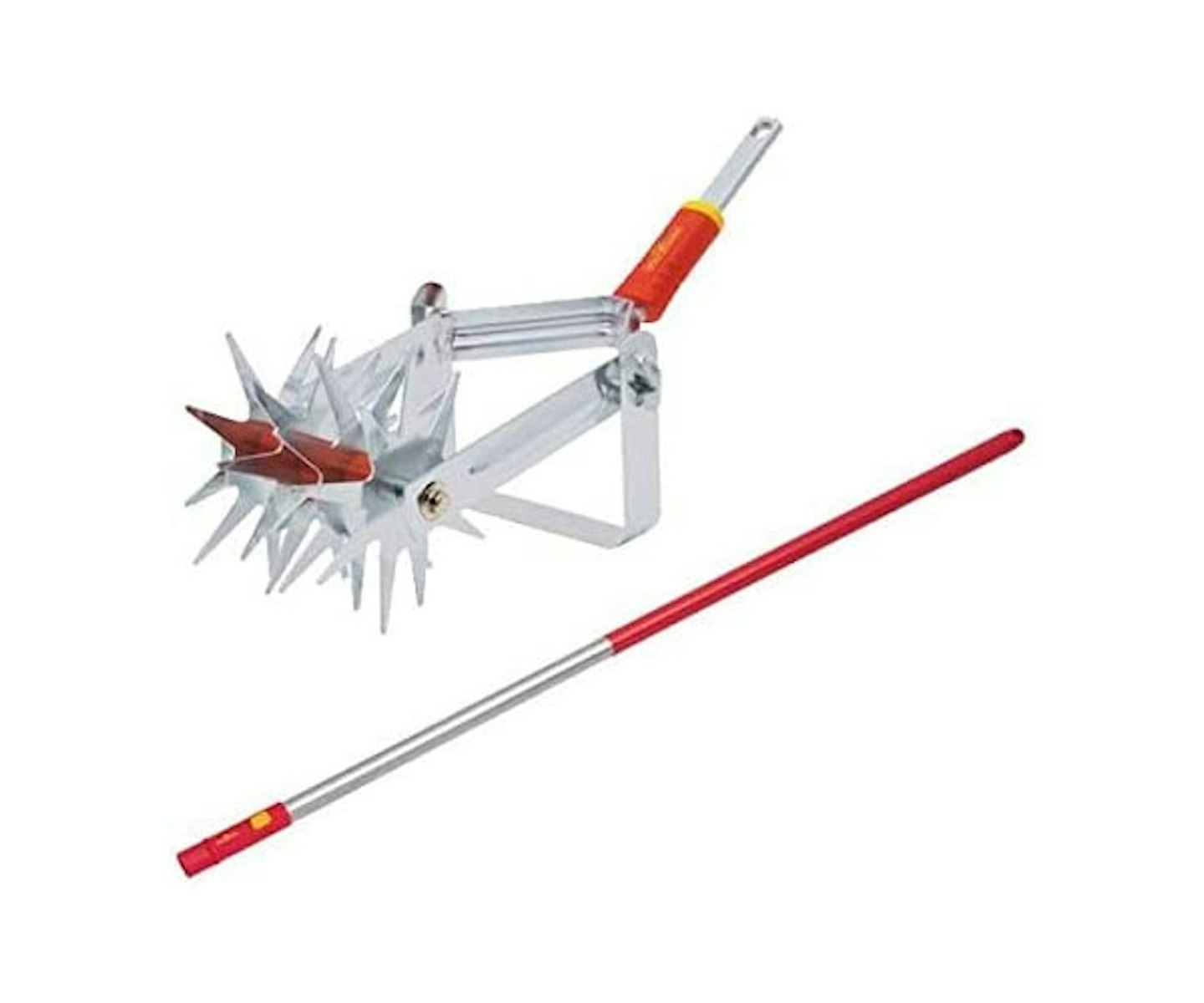 Wolf-Garten
Wolf-GartenThis versatile multi-change cultivator incorporates all the tools needed to keep borders in good condition. It has a solid, robust design with tines, prongs and blades that resist bending, wear, and corrosion.
The Wolf-Garden multi-change heads snap in and lock firmly, then release instantly when required with the press of a button. This Multi-Change Soil Miller will crumble soil into a fine tilth ideal for sowing seeds and planting and mix peat, manure and fertiliser into the soil.
Pros
- Multi-change heads for multiple tasks
- Comes with a 10-year guarantee
Cons
- Handle is only 142cm long
| Dimensions: | 15 cm wide |
| Weight: | N/A |
| Material: | High-quality aluminium and cold-rolled steel |
Best handheld cultivator tools
Editor’s choice
 Burgon & Ball
Burgon & Ballwww.ebay.co.uk
The Burgon & Ball GTH/SCCRHS RHS Stainless Claw Cultivator is a high-quality and long-lasting tool that is ideal for any gardener. The cultivator has a set of curved claws created to loosen and aerate the soil, making it easier for roots to penetrate and improve the structure of the soil.
Crafted with a wooden handle and stainless steel prongs that won't rust, this hand cultivator is excellent for small jobs in your garden. Plus, the sleek look makes it a great gift.
Pros
- Suitable for small tasks and weeding on your knees
- High quality, RHS-approved hand tool
Cons
- Not especially ergonomic
| Dimensions: | 29 x 7.6 x 7.6 centimetres |
| Weight: | 208g |
| Material: | Stainless steel prongs, ash handle |
Best twist cultivator
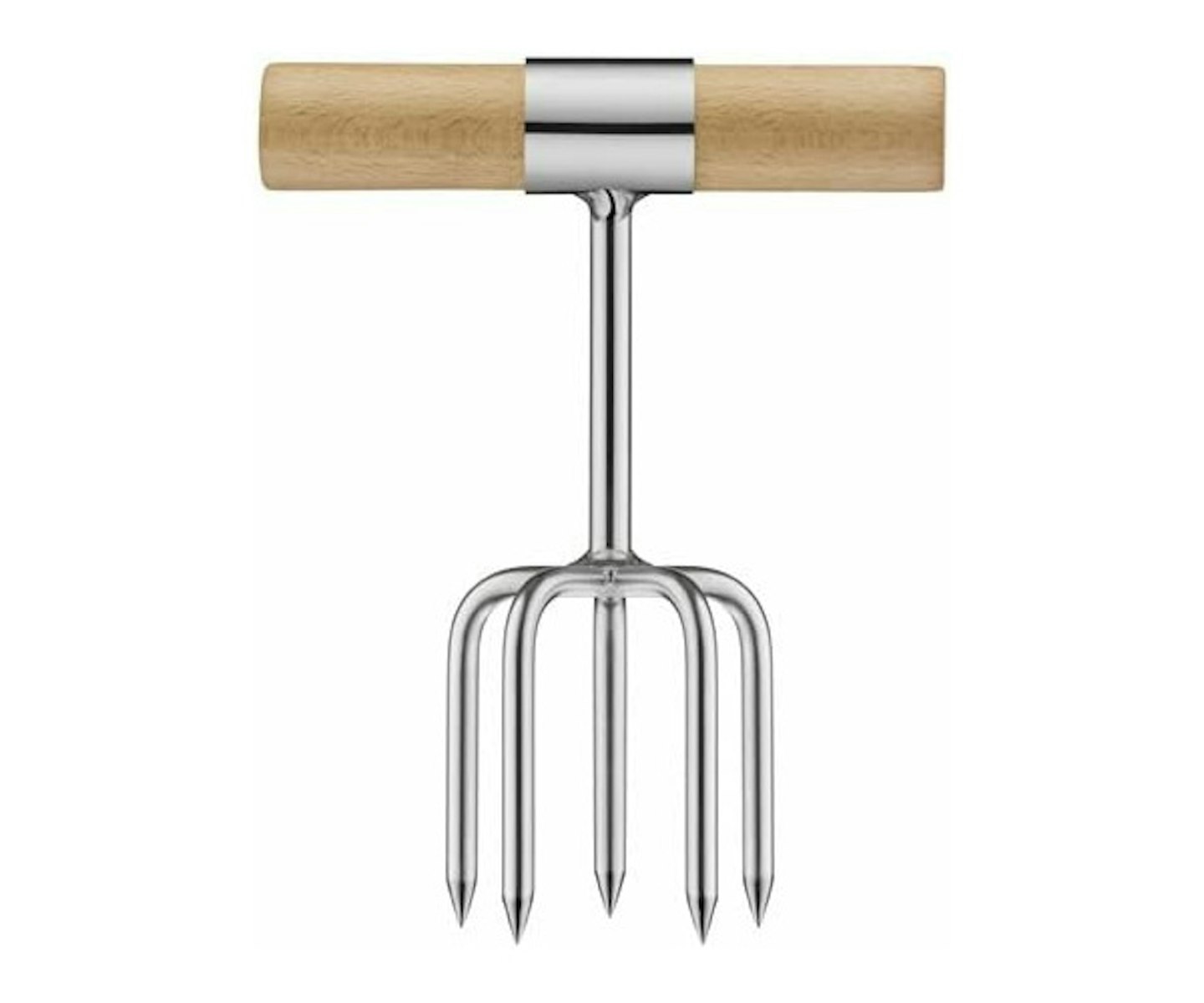 Burgon & Ball
Burgon & BallThis nifty Twist Cultivator is constructed from a strong, high-quality stainless steel material that is robust and long-lasting. Garden tools from Burgon & Ball use traditional manufacturing techniques, and their attention to design results in hand tools that can be relied on and make gardening easier for everyone.
The tines of my Twist Cultivator efficiently push into all soils, and due to its lightweight and compact size, it's straightforward to work between closely spaced plants in raised beds and pots.
Pros
- Good size and shape for smaller hands
- Comes gift boxed so could make a nice present
Cons
- Expensive
| Dimensions: | 48 x 6.35 x 10.16 cm |
| Weight: | 336g |
| Material: | Stainless steel prongs, beechwood handle |
Best budget handheld cultivator
 Draper
Draper Priced at under £5, this hand cultivator from Draper is a great value, budget-friendly garden tool. The prongs are made from epoxy-coated carbon steel, which is hardened and tempered with plated ferrule, so this tool will make light work for your garden tasks.
This has a lightweight plastic handle that boasts a useful leather wrist strap. Draper tools are manufactured with high-quality materials, this, and the ergonomic design, means this will be a reliable piece of kit in your collection.
Pros
- Epoxy-coated hardened and tempered steel prongs
- Comes with a handy leather wrist strap
Cons
- Some might find this tool too lightweight
| Dimensions: | 6.81 x 7.11 x 24.21 cm |
| Weight: | 131.5g |
| Material: | Carbon steel prongs, plastic handle |
Best easy grip hand tool
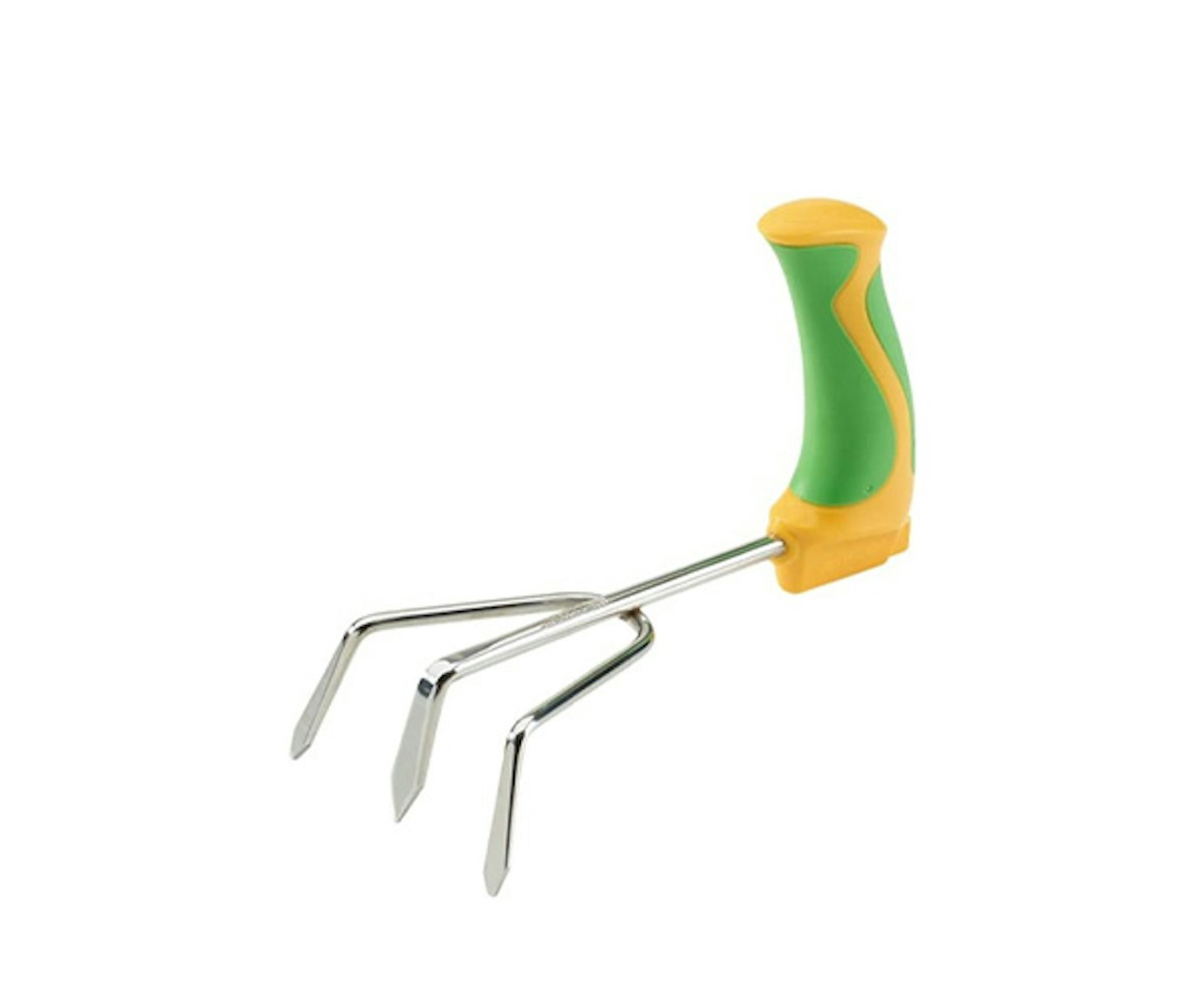 Easi-Grip
Easi-GripThe Easi-Grip PETA Garden Tool is a hand-held cultivator designed for use in small gardens and outdoor spaces. It features an ergonomic handle that is easy to grip and comfortable to hold, even for extended periods of use, making it excellent for those with arthritis.
The handle is made from a soft, non-slip material that helps prevent hand fatigue and is shaped to fit the hand's natural contours. The tines are made from a durable stainless steel material that is resistant to rust and wear and are spaced closely together to provide top coverage and effectiveness.
Pros
- Ergonomically-shaped, comfortable handle
- Durable stainless steel tines that are resistant to rust and wear
Cons
- Not as effective as larger cultivators in breaking up heavily compacted soils
| Tines: | Curved, stainless steel |
| Weight: | 258g |
| Guarantee | Two-year guarantee. |
How we chose the best cultivators
All of these cultivator tools have been hand-selected by our team of Modern Gardens shopping experts. We carefully considered the design, functionality, and usability in our selection of the best. Our team has spent hours investigating and researching cultivators to make it easier for you to find the very best, and we'd never recommend a product we don't believe in.
Where possible, we also test and share the latest and best products you should know about. And with help from Modern Gardens Magazine, Garden News and Garden Answers, we share expert gardening knowledge to help you get the most from your product.
What is the difference between a garden tiller and a cultivator tool?
An electric tiller breaks up hard and compact soil, whereas a garden cultivator mixes up dirt that is already loose. Cultivators are used for mixing soil that has been broken up. Such as when compost or fertiliser is added after tilling and before planting. Additionally, cultivators can also be used after planting to control weeds.
How to use a soil cultivator tool?
Modern Gardens Magazine writer Geoff Hodge guides us through the tools that break down soils into a lovely crumbly tilth. "Soil cultivating tools not only break down the soil into finer particles, but the process also aerates the soil and allows for better absorption of water and nutrients."
"They are also used to break up soil pans, dense layers of soil below the uppermost topsoil layer, and soil capping. This is the hard surface crust in the top 1-10mm of bare soil, usually caused by heavy rainfall pounding on the soil surface. This is then hardened by the sun and drying winds to produce a crusty surface that sometimes cracks."
"Long-handled cultivators are the best choice when dealing with larger areas of soil, whereas hand-held versions are better in small areas or when working close to and around plants. Hand-held ‘midi’ tools with longer handles provide a bit more reach."
"The majority feature three, sometimes four, prongs. Those with pointed and even sharpened tips will cut through heavy soils better than those with blunt ends. And those with prongs that curve back towards you, rather than downwards, tend to be easier to use and control."
"Cultivators with prongs will be perfect for the vast majority of soils. But where the soil is very heavy or hasn’t been cultivated for many years, cultivators with blades are more powerful and will cut through the soil more quickly and easily. The Wolf-Garten Multi-Change Soil Miller, for instance, is often referred to as the ‘soil buster’! Using these first and then following up with a pronged cultivator usually produces excellent results."
What to consider when choosing a soil cultivator tool?
Before purchasing a soil cultivator tool, there are a few things to consider to ensure you pick the right one for you.
Material
When selecting a cultivator, your main choices are between carbon steel or stainless steel prongs and shafts made of traditional wood or lighter-weight aluminium or even FiberComp, which is a fibre-reinforced plastic composite resin.
Carbon steel is slightly heavier than stainless steel and can rust if you don’t take care of your tools and oil them regularly.
Stainless steel is lighter than carbon steel and tends not to corrode or rust. It is easier to keep clean and generally easier to work through heavy soils.
Specifications
Handles: Wooden handles, usually made from ash, can rot if not maintained and kept dry. They can also be quite rough and produce blisters, especially on cheap models that use poor-quality wood and even splinters. If you decide on a wooden handle, choose one that has been varnished or check the quality and smoothness first. Where available, make sure it’s comfortable.
Length: Ensure it’s the correct length for your height to use upright without bending
Shaft: Make sure it’s smooth, and that wooden shafts don’t have imperfections that could result in cracking, breaking or splinters
Prongs: Width, length and material will affect weight, balance and how deeply they cultivate
There are many different types of cultivators on the market, and choosing the right one will depend on the size and type of your garden or plot of land, as well as your personal preferences and needs.
For small gardens, hand-held cultivators or those that one person draws are a great choice as these are often lighter, easier to manoeuvre and can be used to cultivate small areas of land quickly and efficiently.
So without further ado, here are the best soil cultivator tools picked by gardening expert Geoff Hodge to ensure your garden soil is of excellent standard.
Soil cultivator tools FAQs
How do I maintain garden cultivator tools?
Regardless of the type of cultivator you choose, it is necessary to follow proper care and maintenance procedures to ensure it is working at its best. This may include cleaning the tines or blades, lubricating the moving parts, and checking for any signs of wear or damage. You may also want to occasionally oil the metal parts too. By taking good care of your cultivator, you can ensure that it will last for many seasons and help to keep your soil healthy and productive.
How do I use a garden cultivator?
You can use a garden cultivator by simply holding the tool in your hand and using the tines or prongs to loosen and aerate the soil in your garden bed or planting area. You can move the cultivator back and forth in a sweeping motion to cover a larger area or use a more precise digging motion to target exact areas of soil.
Can a garden cultivator be used to remove weeds?
Yes, the prongs can remove weeds. To do this, use the cultivator to slice through the weed at the base of the plant, being careful not to harm the surrounding soil or plants.
What to read next
Garden shears that help you regain control of your outdoor space
Subscribe to Modern Gardens magazine and get the most out of your outdoor space. Discover everything you need to know to make your outside space look fantastic, quickly and easily, with hundreds of simple ideas, designer tricks, affordable products and expert advice in every issue of Modern Gardens. View our latest subscription offers to save on shop prices.
Ellen Kinsey was a Senior Health and Wellness Product Writer and has been a part of Bauer Media since 2020. She has left Bauer Media to study Ayurveda in India to expand her knowledge and skills in the health and wellness field, where she plans to continue making journalistic contributions.
